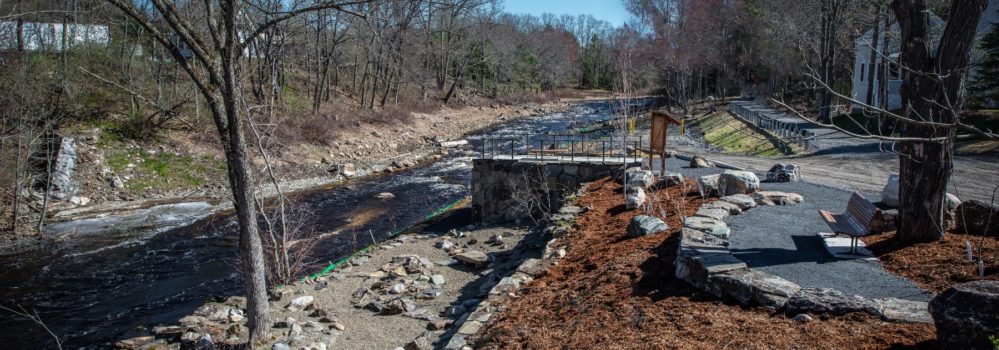
Charting a course for a river’s future

Standing near the former site of the Coopers Mills dam in Maine, you’d be hard-pressed to realize the years of effort it took to remove the dam, the number of people who became involved, or the many ways a river can be part of a community.
Built in the early 1800s, the 185-foot-long and nearly 12-foot-tall dam supported several sawmills and a thriving lumber industry. Over time, the dam fell into disrepair and became a public safety hazard. Discussions on removal of the dam were initiated by the Sheepscot River Watershed Council in the late 1990s but abandoned over concerns about lake levels and fire protection. Change is hard, too — Coopers Mills dam served as a local landmark.
In 2001, partners including the U.S. Fish and Wildlife Service’s Gulf of Maine Coastal Program, Trout Unlimited, Sheepscot River Watershed Council, and the Town of Whitefield worked together to find a solution.
In 2015, as the dam continued to deteriorate, the town joined with Atlantic Salmon Federation and the Sheepscot Valley Conservation Association to create a plan for dam removal that improved fish passage, maintained fire protection with the installation of three fire hydrants, and took away the increasing liability of a deteriorating dam from the Town of Whitefield.
To honor the dam’s cultural ties, the dam’s abutments would be preserved, foundation walls stabilized, and interpretive signs installed. In 2016, the citizens of Whitefield voted to remove the dam and install the hydrants.
Learn more about the removal of the Coopers Mills dam by reading the full article.
Samantha Brooke is the national team lead for the U.S. Fish and Wildlife Service Coastal Program.
